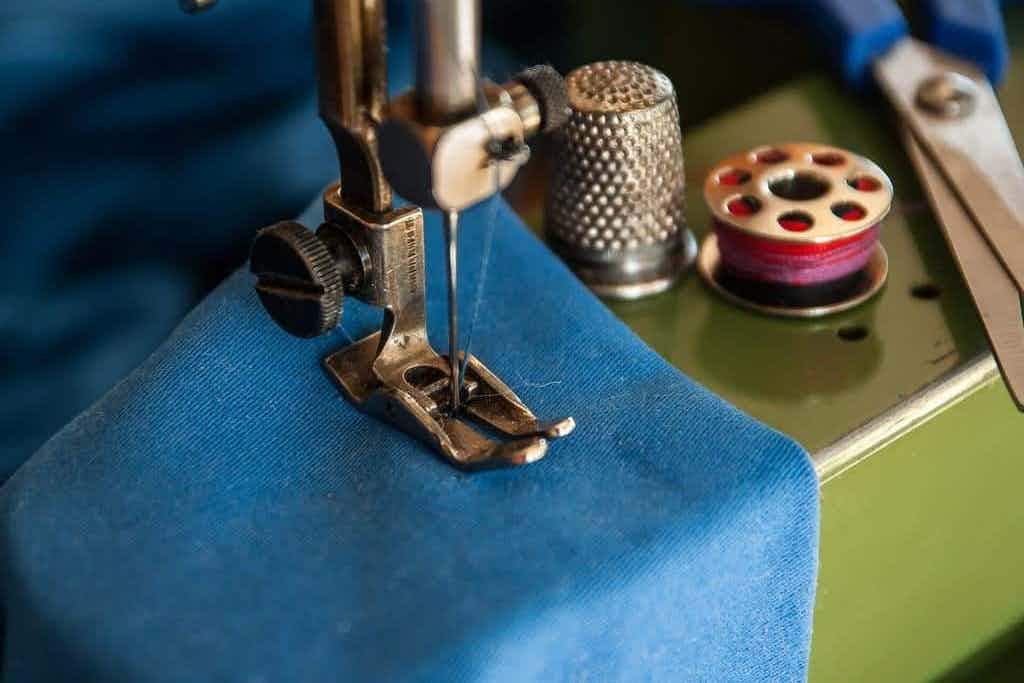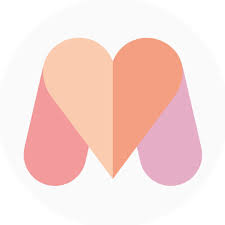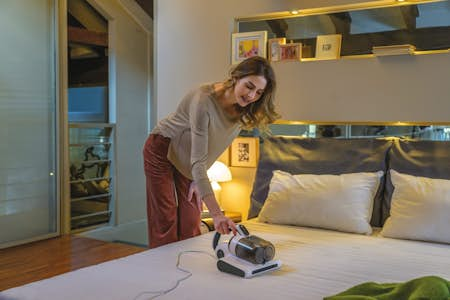Learning to sew gives you the freedom to create your own clothes, gifts, homeware, and decorations. It’s a skill that requires patience, but once you’ve mastered the basics, you’ll be creating fantastic projects in no time. We’ve put together a guide to help you take your first steps into stitching.
Can I Learn to Sew on My Own?
Yes, you can learn to sew at home, on your own! You can find simple instructions by buying a beginner’s sewing book, finding free videos for beginners, or signing up to online lessons. However, it’s easy to feel overwhelmed by the number of resources available.
As you start to learn to sew, you will come across techniques that are too advanced or not relevant for your first projects. To avoid confusion, it’s a good idea to focus on learning the basics. To start, you’ll need to learn how to:
- Thread your machine.
- Measure accurately.
- Sew in a straight line.
- Secure your stitches.
- Create a simple seam.
- Seam rip (remove stitches with are incorrect).
- Problem solve when things go awry.
If you get stuck with any of these techniques, you’re not alone! There are many others in a similar position online. Check the comments sections of videos, internet forums, and blog articles for helpful tips and tricks.
The Equipment You Need to Learn to Sew
Sewing becomes as expensive as you make it. Sewing for beginners doesn’t require the fanciest tools, but it’s essential to check reviews and make sure that your equipment will do the job. As a minimum, you’ll need:
- Sewing machine
- Beginners sewing kit (including thread, needles, seam ripper, measuring tape)
- Fabric scissors
- Large table
- Fabric (start with bundles of squares known as ‘fat quarters’ or cheap fabric)
Some sewers prefer a roller cutter and cutting mat instead of scissors. This depends on the size of your table and how straight you can cut. Likewise, the quality of material impacts on the cost of the hobby, so it’s best to start with cheap fabric until you know what you’re doing. Otherwise, mistakes become very expensive!
How to Choose a Sewing Machine
It isn’t the best idea to choose a sewing machine based purely on price, but the cost can be a good indicator as to the standard of the machine. A lower price combined with a good rating often means a machine is a suitable choice for beginners. If you’re returning to sewing after a long break, you may be used to using a more advanced machine.
Whatever your level, it’s best to research before you buy. Customers who leave product reviews on websites often mention their sewing ability and the suitability of the machine for them. This is helpful when deciding if the machine is right for you.
Basic Machines
Basic sewing machines can be mechanical or electrical. They usually feature a range of options for stitch type and length that you can change with a button or dial. Many electric models come with an inbuilt light, which is a handy feature, and a foot pedal that controls speed.
Intermediate Machines
Intermediate machines give regular sewers a little more control over their work. Sewers can develop new skills and often sew on thicker fabrics. Intermediate level machines may be bigger than basic machines, which is another factor that may influence your choice.
Advanced Machines
The most expensive high-street machines are computerised, meaning that users adjust stitch length, width, and type on an LED screen. This allows more control for complex sewing patterns and materials. Sewers can finish garments to professional standards and even connect to the internet for patterns or design specialised stitches.
Buying a Second-Hand or Vintage Sewing Machine
There are several factors to take into consideration if you choose not to buy a new model. Vintage sewing machines look beautiful, but their technology comes from a different era. You have probably seen this classic black singer machine. It looks stunning on a sewing table but doesn’t have the easy controls favoured by modern manufacturers.
Buying second-hand sewing machines has similar risks to buying any used device. Novice sewers are unlikely to diagnose mechanical issues or find hidden settings that affect their stitches. Purchasing a basic new model may be favourable to buying a more advanced second-hand model.
Where to Start Learning to Sew
Sewing is a hobby that is accessible to almost anyone. With the internet connecting people around the world, you can now learn from experts of all ages, genders, and nationalities. Below, we’ve compiled a list of five videos to get you started:
- Learn about your sewing machine and how to sew a tea towel with Gretchen Hirsch’s 25-minute class
- Try out quick and easy projects from Rosary Apparel or Debbie Shore
- Browse sewing projects for men’s clothes from Tock Custom’s sewing tutorials
- Find inspiration for clothes alteration projects with Coolipra’s DIY fashion
Please note that we are not affiliated with these videos and cannot guarantee the quality of their content.
Vicky Myers from Vicky Myers Creations told us: "For me sewing is relaxing, it’s absorbing so I am in the present moment and it stretches and challenges me.
"I love how I make clothes to my style in colours which suit me, I'm not restricted by high street fashion. Second-hand duvet covers are a great source of affordable fabric to try out a new pattern and see if it suits and how it fits.
"Most of all I love repurposing and making items for around the home, from denim curtains to makeup remover pads.
"Pick up your sewing machine and have a go! Don’t worry about mistakes - that’s how we all learn."
What to Do if Your Sewing Goes Wrong
First of all, don’t panic! Mistakes are extremely common with beginners and even more experienced sewers. If your sewing looks wrong, but you aren’t sure why, check this quick list below:
- Is your machine threaded correctly?
- Is your bobbin threaded correctly?
- Have you selected the right needle tension?
- Are you using the right needle?
- Are you pushing fabric through too fast?
- Is your needle too thick or thin for your fabric?
Before turning to the internet for help, it’s a good idea to check your sewing machine’s instruction booklet to verify the answers to the questions above. The most common sewing problem for beginners is an incorrectly threaded machine. The threading process gets easier with time and, before you know it, you’ll be an expert.
Have you taken up sewing yet? Leave us a comment below to tell us how you’re getting on! Here at Pension Times, we aim to be the number one, one-stop-resource for over 50s. To find out about more projects, have a look at our lifestyle section.








